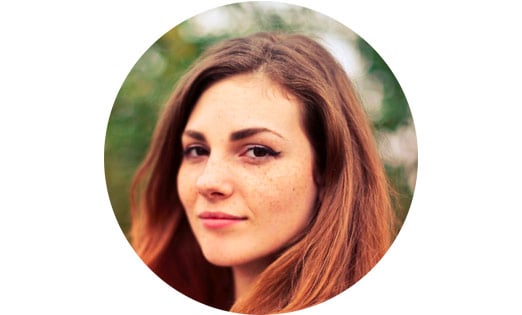(a) Studying overall performance

I acquired twelve bumble-bee (Bombus terrestris dalmatinus) colonies, for each and every that has 2940 workers, from Koppert Biological Possibilities (Berkel dentro de Rodenrijs, The netherlands). All the pros have been distinctively designated to the thorax having designated, colored labels (Opalith labels; Religious Graze Kg, Germany). That it acceptance individuals end up being precisely recognized in both laboratory discovering tests and community foraging trials.
The latest bees was pre-trained to forage regarding 20 bicoloured, blue and you will red, phony plant life from inside the a lab trip stadium. The newest square, bicoloured flowers was indeed manufactured from one or two halves (per 12?24 mm): you to definitely purple (Perspex Reddish 260) together with other blue (Perspex Bluish 727). While in the pre-knowledge, all the bicoloured flowers was compensated with 50% (w/w) sucrose service providing in past times the color-naive bees that have the same chance to representative both tints that have award (Raine ainsi que al. 2006b). Bees finishing no less than five straight foraging bouts to your bicoloured plants was basically picked having studies. These foragers have been coached yourself, in an airline stadium that contains 10 blue (Perspex Blue 727) and you can ten purple (Perspex Purple 260) phony flowers (for every 24?24 mm). Yellow plants have been rewarding (for each contained fifteen ?l of 50% (w/w) sucrose provider), when you’re blue herbs had been blank (unrewarding). Bees was in fact regarded as going for a rose when they sometimes reached (inspected) otherwise landed involved. Obtaining towards a flower didn’t always end up in a serving (probing) enjoy. Therefore, prior to probing a rewarding (yellow) flower, bees you can expect to like each other red/fulfilling or blue/unrewarding plant life because of the addressing or getting to them (in the place of probing). Opting for a red (rewarding) rose try thought to be correct’, while you are opting for a blue (unrewarding) flower is actually deemed becoming a keen error’. We submitted the choice sequence from for each and every bee regarding the date they first inserted the latest airline stadium. Recording the fresh rose options for per bee stopped once it got generated 99 rose options after the first-time it probed a good rewarding (yellow) rose https://kissbridesdate.com/blog/russian-dating-sites-and-apps/ (Raine ainsi que al. 2006b). Ergo, for every single bee made at the least 100 rose possibilities, including the first time they probed an advisable rose, as well as people possibilities made before this basic probing event.
Plants was in fact altered in addition to their ranking re-randomized anywhere between foraging bouts to cease bees using smell marks otherwise early in the day flower positions as predictors regarding award. Flower tints was indeed chosen so that bees needed to overcome the solid, unlearned preference getting bluish, in advance of associating certainly one of its innately the very least favoured colours (yellow) which have award (Chittka mais aussi al. 2004; Raine et al. 2006a). Fifteen bees was basically instructed of for every single nest (i.e. 180 bees in total) between 4 and you may . Thorax thickness specifications was drawn for each and every ones bees since a way of measuring looks proportions. Regulated light to have laboratory studies are provided by large-regularity fluorescent lighting (TMS 24F lamps that have cuatro.3 kHz ballasts (Philips, Holland) fitting that have Activa sunlight hoses (Osram, Germany)) in order to simulate pure daylight above the bee flicker collection frequency.
(b) Understanding curves
The starting point for each bee’s learning curve was the proportion of errors made (blue flowers chosen) before the bee first probed a rewarding (yellow) flower. For bees making fewer than five flower choices (either by approaching or landing on them) before probing a rewarding flower (n=53), we used the colony mean proportion of errors (calculated from bees making five or more such choices). Flower choices made by each bee after (and including) the first time it probed a rewarding (yellow) flower were evaluated as the number of errors (blue flowers chosen) in each group of 10 choices. Learning curves (first-order exponential decay functions: y=y0+Ae ?x/t ) were fitted to these 11 data points (i.e. the start pointing and subsequent 10 groups of 10 flower choices) for each individual bee, using Microcal Origin (Chittka et al. 2004; Raine et al. 2006b), to capture the dynamic nature of the learning process. Here, x is the number of flower choices the bee made, starting with the first time it probed a yellow flower, and y is the number of errors. The saturation performance level (y0) is the number of errors made by a bee after finishing the learning process, i.e. when reaching a performance plateau. The decay constant (t) is a measure of learning speed: high values of t correspond to slow learning, whereas lower t values indicate faster learners. A is the curve amplitude: the maximum displacement (height) of the curve above y0. Both amplitude (A) and saturation performance (y0) were constrained between 0 and 10 for curve fitting. Eight (out of 180) bees showed no appreciable improvement in performance during the task, and the software generated learning curves’ that were essentially horizontal lines. These bees were excluded from subsequent analyses because their t values were either very high (>400) or negative.


